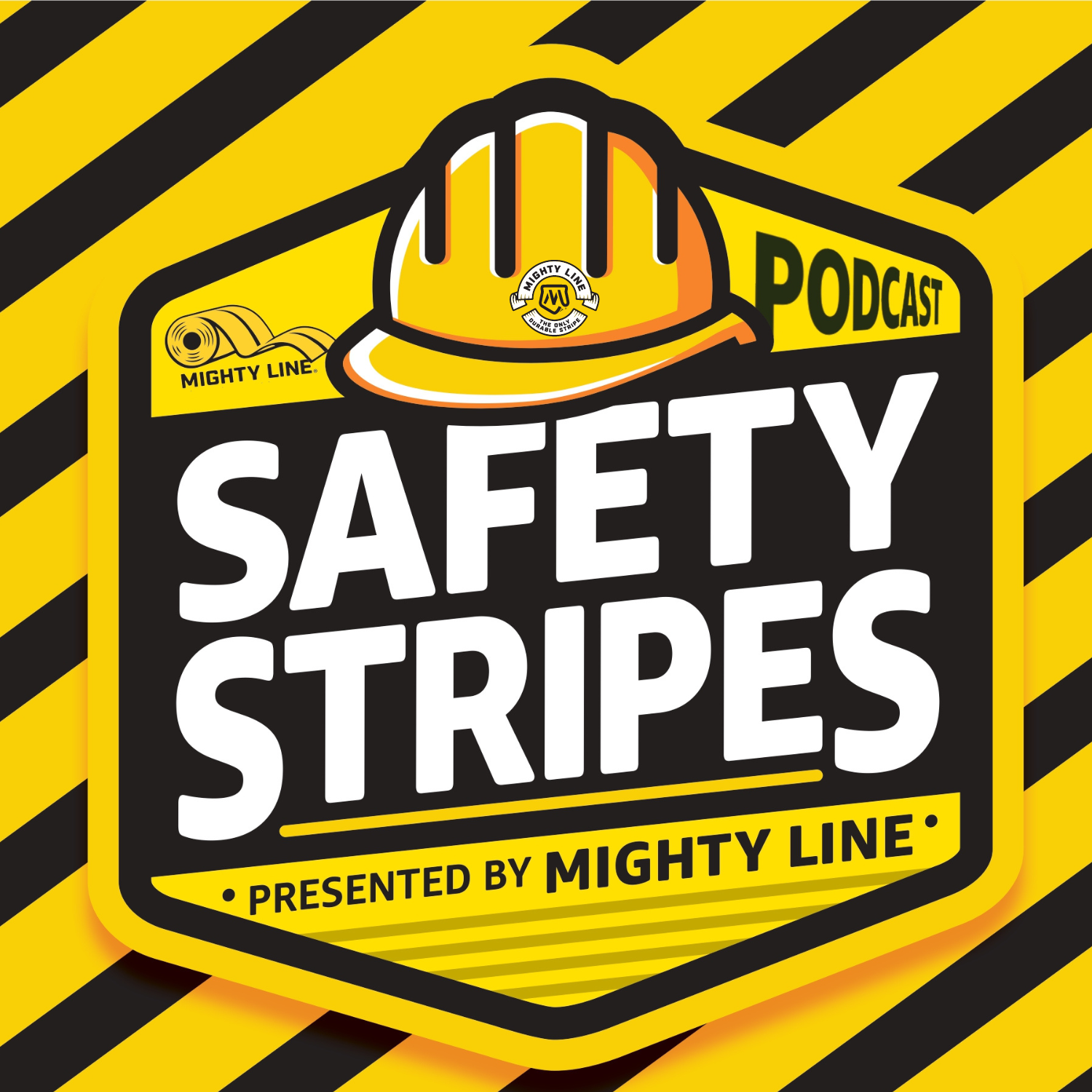
Warehouse Safety Tips by Wes Wyatt and Mighty Line Floor Tape - The Best Workplace Safety podcast talking Warehouse Safety Tips!
Warehouse Safety Tips by Mighty Line is a podcast series produced by Wes Wyatt.
Podcasts will be weekly and highlight general industrial and workplace safety topics. View the blogs, videos and articles at https://mightylinetape.com/ Vodcasts, and videos of the podcasts can be viewed at https://vimeo.com/mightylinefloortape.
Get Free Samples of Mighty Line Floor Tape (https://mightylinetape.com/pages/product-request-form)
Learn about Mighty Line Floor Tape and Mighty Line Floor Signage (https://mightylinetape.com/pages/about-us-floor-tape)
View all our podcasts at https://mightylinetape.com/pages/safetytips
Safe operations are critical to every industry. It is essential that all employers maintain safe workplaces, and that all employees and visitors engage in behaviors that assure that all will return home safely. The Safety Stripes podcast will discuss important warehouse, industrial and commercial safety topics that management, safety managers and others with safety responsibilities can use to be more effective in protecting both employees and their operations. Wednesday Warehouse Safety Tips will do just that – provide everyday operational tips, tools and strategies that enable employees, supervisors, and managers to put safety into action in order to reduce workplace risk.Our goal is to improve health, safety and operational excellence at all worksites.
Safety Stripes Podcast topics include or may include:
General Workplace |Safety | Safety Training Programs| Hazard Identification | Personal Protective Equipment (PPE) | Occupational Safety and Health Administration |OSHA Compliance Guidelines |Six Sigma - 5s Methodology |OSHA Inspection Tips |NFPA (National Fire Protection Association) |Fire Safety Standards | NFPA Codes and Standards |EHS (Environment, Health, and Safety) | Environmental Compliance |Workplace Health Programs |Safety and Health Management Systems |Forklift Safety |Forklift Operation Training | Forklift Maintenance and Inspection |Forklift Accident Prevention | Racking Systems |Warehouse Racking Solutions |Pallet Rack Safety Standards | Racking Inspection and Maintenance|
You can learn more about our warehouse safety tips and watch videos and read articles (https://mightylinetape.com/a/blog/category/mighty-lines-safety-talk-and-toolbox-talk-topics)
This podcast is provided by Mighty Line floor tape (https://mightylinetape.com/collections/industrial-safety-floor-tape-solid) and Mighty Line floor signs (https://mightylinetape.com/collections/mighty-line-standard-floor-signs) - learn more at www.MightyLineTape.com (https://mightylinetape.com/)
Warehouse Safety Tips by Wes Wyatt and Mighty Line Floor Tape - The Best Workplace Safety podcast talking Warehouse Safety Tips!
Warehouse Safety Tips | Episode 283 | Hazard Communication & Chemical Safety: Safety Data Sheets (SDS)
https://jo.my/8fu6y7
Hazard Communication & Chemical Safety: Safety Data Sheets (SDS)
A strong safety culture depends on clear communication, especially when it involves hazardous chemicals. That's where Safety Data Sheets (SDS) come in. These standardized documents are essential for informing, protecting, and preparing everyone in the facility. Understanding SDS is critical to chemical safety, whether you're handling a chemical daily or passing through a storage area.
SDSs provide detailed information about the properties, hazards, safe handling, and emergency procedures related to chemical products used in your facility. Every worker has a right to know what chemicals are present, how they might be affected, and what steps to take in case of exposure. Knowing where to find SDSs and how to read them isn't just helpful—it's necessary.
Here are a few tips to assist you with understanding and using Safety Data Sheets effectively:
- Know what an SDS is and why it matters: An SDS document provides key safety information about a chemical. It outlines how to store, handle, and dispose of the material safely and what to do in an emergency. These documents are standardized, making them easy to follow once you understand the format.
- Understand the structure of an SDS: Most SDSs are split into sections. These sections include identification, hazard identification, composition, first-aid measures, firefighting measures, handling and storage, exposure controls, and more. The first few sections are the most frequently used during daily tasks and emergencies.
- Always know where SDSs are located: They must always be easy to access, whether in a binder in the break room or through a digital system. Never guess when dealing with chemicals. If you can't find the SDS, stop and ask before proceeding.
- Use the SDS to prepare and respond: Whether using personal protective equipment, responding to a spill, or treating a chemical exposure, the SDS tells you what steps to take. It's the first line of defense in handling chemical-related incidents correctly.
- Remember your right to know: Every team member has the right to understand the hazards they may be exposed to. If you don't understand something in an SDS, ask questions. Staying informed helps keep everyone safe.
Understanding how to read and use an SDS is not just for emergencies—it's part of working smart and staying safe daily. Make it a habit to review SDSs for any new chemical introduced into your area. To keep this knowledge fresh, reinforce it during toolbox talks and safety meetings.
Your safety depends on preparation. With the correct information, you can minimize risks and create a safer work environment for everyone in the facility.
Thank you for being part of another episode of Warehouse Safety Tips.
Until we meet next time - have a great week, and STAY SAFE!
#Safety #SafetyFIRST #SafetyALWAYS #StaySafe #SafetyCulture #ChemicalSafety #SafetyDataSheets #SDSAwareness
Podcasts we love
Check out these other fine podcasts recommended by us, not an algorithm.

Safety Stripes by Mighty Line Floor Tape - The Best Workplace Safety podcast talking NFPA, EHS & Warehouse Safety Tips!
Wes Wyatt, Mighty Line Floor Tape
The Safety Pro Podcast
Blaine J. Hoffmann, MS OHSM
Stripe It Like It's Hot
Cam Roberts
The New Warehouse Podcast
Kevin Lawton
